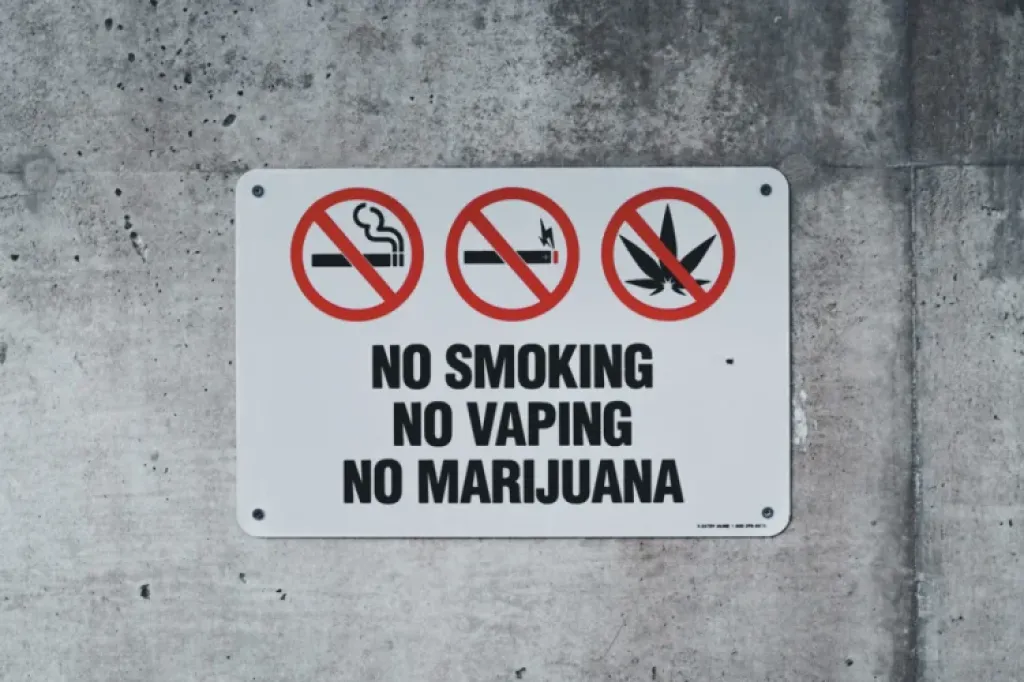
Cigarette smoke can be a persistent issue, especially when it infiltrates your living space from neighboring homes. While asking neighbors to quit smoking might not always be feasible, there are innovative solutions to reduce the impact of cigarette smoke. In this exploration, we’ll delve into the use of misters for smoke, alternatives to devices like SmokeBuddy, and various strategies to keep your home free from unwanted cigarette smoke.
What are the health risks associated with cigarette smoke?
Cigarette smoke is very harmful and can cause serious health problems for both smokers and those around them. The dangerous substances in cigarette smoke, like tar and carbon monoxide, are the main reasons for health issues. If someone smokes for a long time, it significantly raises the chances of getting lung cancer, chronic obstructive pulmonary disease (COPD), and heart disease. The respiratory system, which helps us breathe, is particularly affected, leading to more cases of bronchitis, pneumonia, and weaker lungs. Smoking is also connected to an increased risk of strokes and problems with blood vessels.
Secondhand smoke is equally problematic, especially for non-smokers, especially when they’re in enclosed spaces. Being around secondhand smoke makes it more likely to get respiratory infections, asthma, and, in infants, sudden infant death syndrome (SIDS). To prevent these harmful effects, it’s crucial to increase public awareness and have effective programs to help people quit smoking.
Can exposure to secondhand smoke be harmful?
Breathing in secondhand smoke is really bad for non-smokers. It has a mix of harmful chemicals that can cause serious health problems, especially for the lungs and heart. Studies show that being around secondhand smoke raises the chances of getting respiratory infections, asthma, and even sudden infant death syndrome (SIDS) in kids. For adults, it can increase the risk of heart disease and lung cancer.
To make things better, we need to create places where smoking is not allowed, make rules against smoking in certain areas, and tell people about how dangerous secondhand smoke is. It’s important to take actions to keep non-smokers safe, like having rules about where people can smoke and helping those who smoke to quit. This way, we can make sure everyone is in a healthier and safer environment.
How can one quit smoking and reduce exposure to cigarette smoke?
Stopping smoking is hard but worth it for better health and less exposure to cigarette smoke. People can use different ways to quit, like talking to a counselor, using things that replace nicotine, or joining groups for support. Therapy and medicine can also help increase the chances of quitting.
To reduce exposure to cigarette smoke, it’s important to make places smoke-free. This means having rules that say no one can smoke in public areas, workplaces, and homes. It’s also crucial to tell people about how harmful smoking and secondhand smoke can be. Supporting and encouraging those who want to quit is important, and providing tools to deal with cravings and feeling irritable during this process is helpful.
Overall, it’s important for individuals to stay determined, get support from friends and family, and have community rules that make spaces healthier and free from smoke.
Understanding the Challenge: Dealing with Neighbor’s Cigarette Smoke
Living near neighbors who smoke can pose challenges, especially when cigarette smoke permeates your home. Secondhand smoke containing harmful chemicals can affect indoor air quality and your overall well-being. Instead of resigning yourself to this situation, exploring effective methods to minimize the intrusion of cigarette smoke becomes crucial for a healthier living environment.
Misters: A Refreshing Approach
Misters, commonly associated with outdoor cooling, can also be employed as a strategic tool to minimize the impact of cigarette smoke. By creating a fine mist that disperses in the air, misters can help capture and weigh down smoke particles, reducing their ability to travel and enter your home. Setting up misters strategically, such as near windows or outdoor seating areas, can create a barrier that mitigates the infiltration of cigarette smoke.
Alternatives to SmokeBuddy: Reducing Smoke Dispersion
While SmokeBuddy devices effectively filter exhaled smoke, alternative solutions can further minimize smoke dispersion. Air purifiers equipped with HEPA and activated carbon filters are valuable smoke buddy alternatives, effectively capturing smoke particles and neutralizing odors. Placing these purifiers strategically indoors can significantly improve indoor air quality and reduce the presence of lingering cigarette smoke.
Ventilation Strategies: Enhancing Air Circulation
Improving ventilation is a key strategy in minimizing the impact of cigarette smoke. Ensuring your home has adequate airflow helps disperse and dilute airborne pollutants, including smoke. Simple steps such as using exhaust fans, opening windows, and strategically placing fans can enhance ventilation, creating a more breathable indoor environment. Additionally, creating positive air pressure within your home can help prevent smoke from infiltrating through gaps and openings.
Creating a Smoke-Free Zone: Outdoor Solutions
If the primary concern is cigarette smoke infiltrating outdoor spaces, creating a smoke-free zone can be an effective solution. Installing outdoor barriers, such as privacy screens or tall plants, can be a physical barrier, preventing smoke from drifting into your outdoor living areas. Designating specific areas where smoking is not allowed communicates clear boundaries and encourages neighbors to be mindful of their smoking habits.
SmokeBuddy Alternatives: Enhancing Indoor Air Quality
In addition to misters and ventilation strategies, exploring alternative devices to SmokeBuddy can further enhance indoor air quality. Air purifiers with advanced filtration technologies, such as ionizers and UV-C light, can provide comprehensive smoke removal. Choosing cleaners with a high Clean Air Delivery Rate (CADR) ensures efficient and rapid removal of airborne particles, including those associated with cigarette smoke.
Community Communication: Diplomatic Dialogue
Engaging in open and diplomatic communication with neighbors about the impact of cigarette smoke can foster understanding and cooperation. While approaching the topic delicately, expressing concerns about health and well-being can prompt neighbors to consider adjusting their smoking habits. Exploring compromises, such as designated smoking areas away from shared spaces, can create a more harmonious living environment.
Legal Considerations: Know Your Rights
In situations where diplomatic approaches yield limited results, familiarizing yourself with local laws and regulations regarding secondhand smoke is essential. Some jurisdictions have specific laws addressing the issue of smoke infiltration between residences. Understanding your rights and potential recourse can empower you to take appropriate action.
Conclusion
Minimizing the impact of neighbor’s cigarette smoke requires a combination of innovative solutions, open communication, and a proactive approach to indoor air quality. Adopting a comprehensive strategy from misters and alternative devices to diplomatic dialogue and legal considerations can create a healthier living environment. By exploring these approaches, you can breathe a breath of fresh air and reclaim your home from the intrusion of unwanted cigarette smoke.
FAQ
Smoking cigarettes poses significant health risks, including an increased likelihood of lung cancer, respiratory diseases, and heart problems.
Secondhand smoke exposes non-smokers to harmful chemicals, raising the risk of respiratory infections, asthma, and other health issues.
While e-cigarettes may be perceived as less harmful, they still carry health risks and are not entirely risk-free, especially for non-smokers.
Successful quitting may involve counseling, nicotine replacement therapy, support groups, and behavioral therapies, among other personalized approaches.
Communities can implement smoke-free policies in public spaces, workplaces, and homes, raise awareness about the dangers of smoking, and provide resources for quitting.

